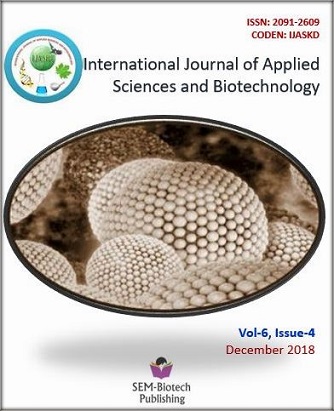Impact of Different Seed Rates and Knocking Down Days of Sesbania on Weed Density and Yield of Dry Direct Seeded Rice
DOI:
https://doi.org/10.3126/ijasbt.v6i4.22114Abstract
The weed is a major constraint of dry-direct seeded rice (DDSR) due to change in establishment methods and shifting weed flora towards competitive grasses and sedges. To minimize the weed density, its species and dry weight with brown manuring and for optimizing the yield of DDSR, the experiment was conducted during monsoon season of 2014 at Chitwan, Nepal. The experiment was done using a strip plot design to find the optimum seed rate and killing date of Sesbania under rice-Sesbania co-culture. Among different seed rates (60, 80, 100 kg ha-1) and knocking down days (21, 28, 35 & 42 DAS) of Sesbania, the optimum seed rate of Sesbania was 102 kg ha-1 and killing date was 32 days. The individual plot size was 5 x 4 m2. The growing of Sesbania with 100 kg seeds ha-1 along with its knocked down at 28 DAS was seen best to minimize the weeds having better performance of rice. The experiment clearly demonstrated the importance of brown manuring on effective control of weeds and on grain yield of rice under dry direct seeded rice.
Int. J. Appl. Sci. Biotechnol. Vol 6(4): 359-365




